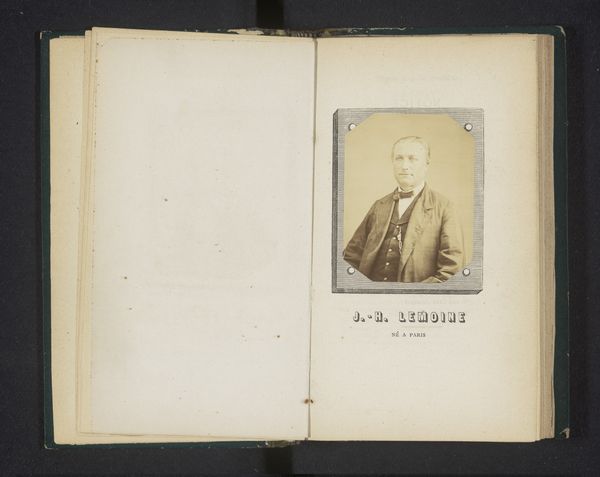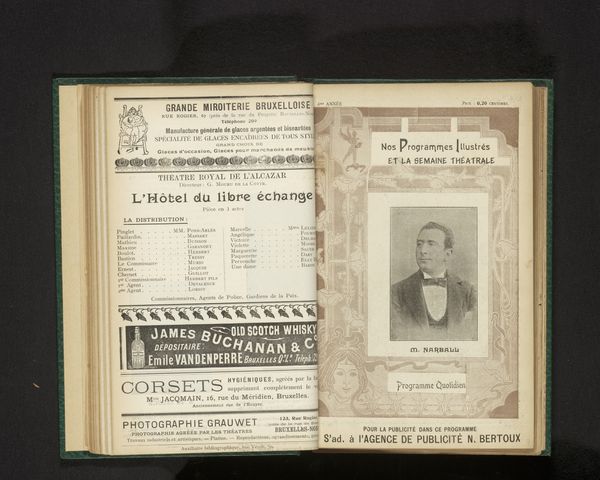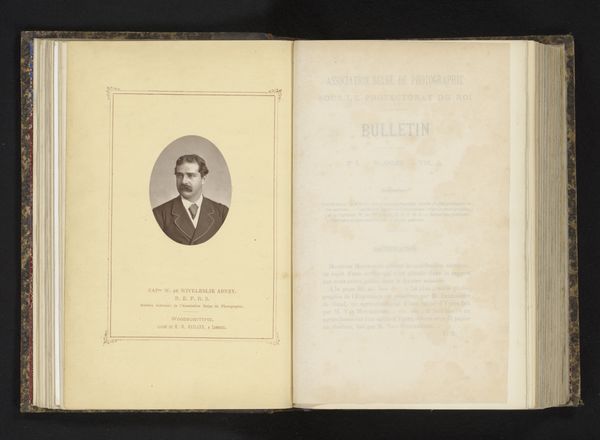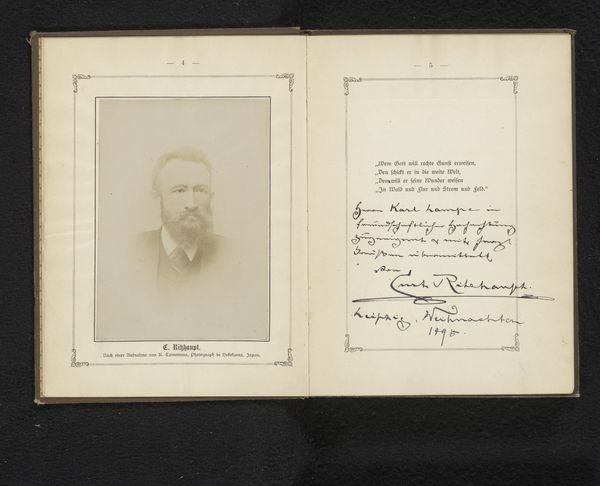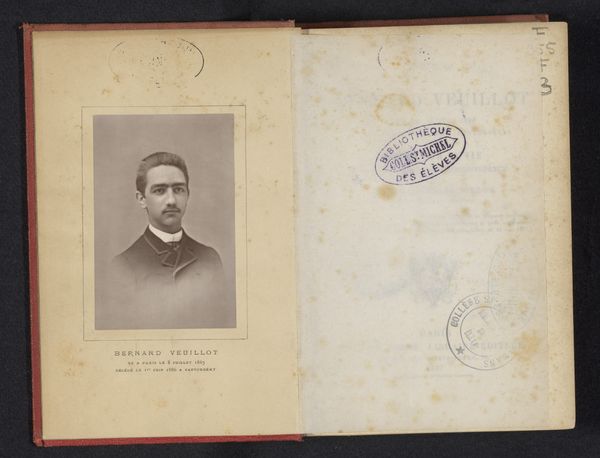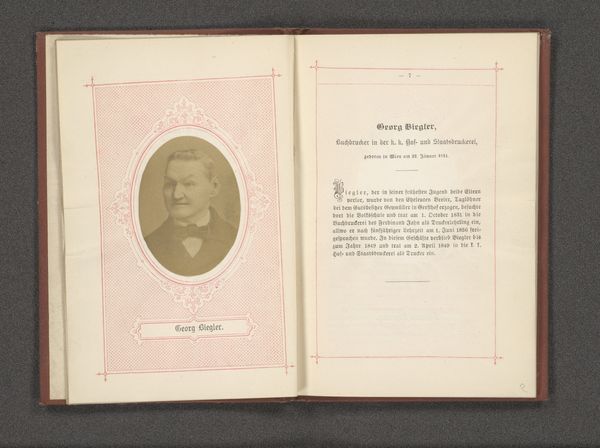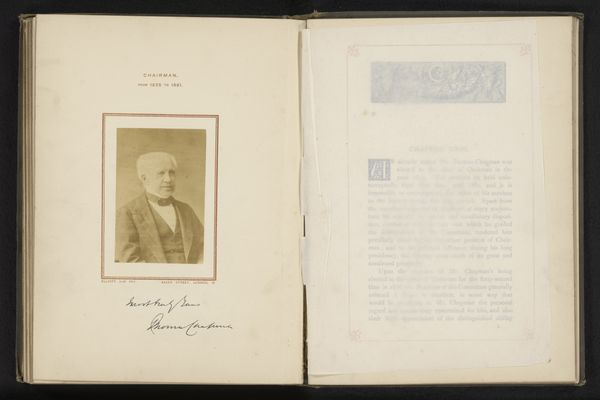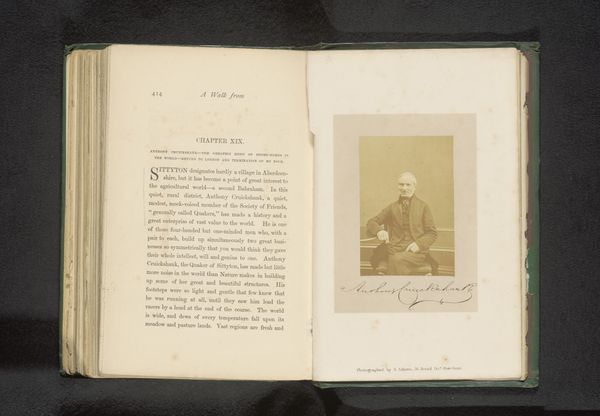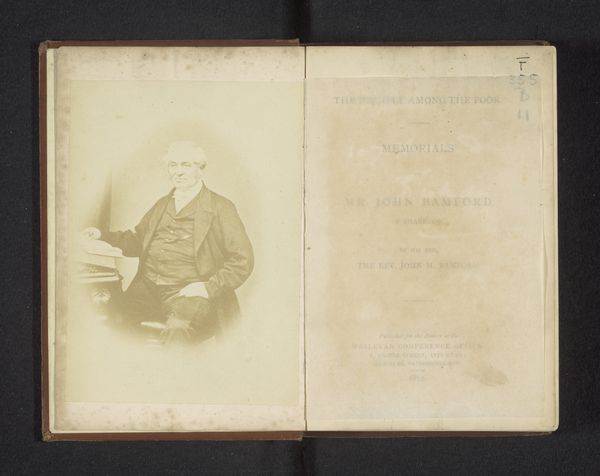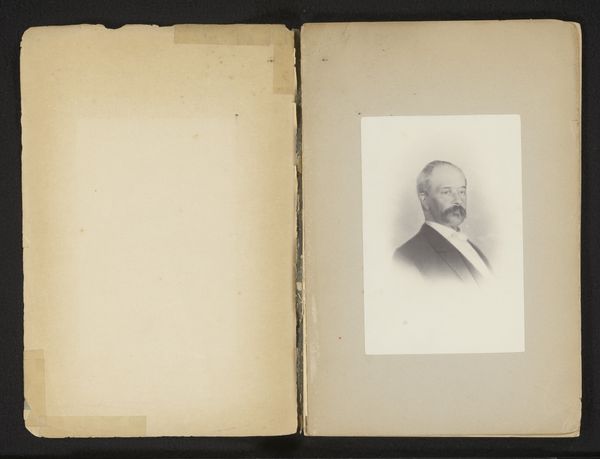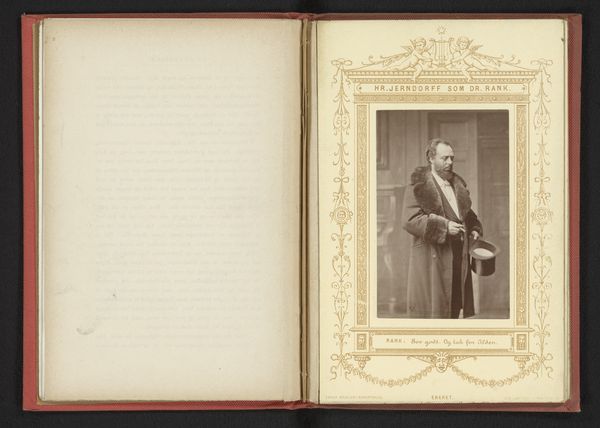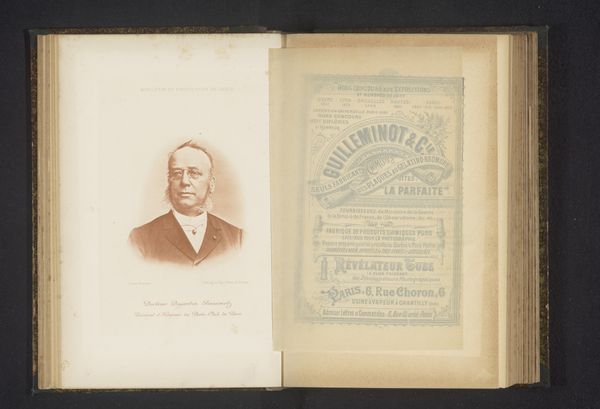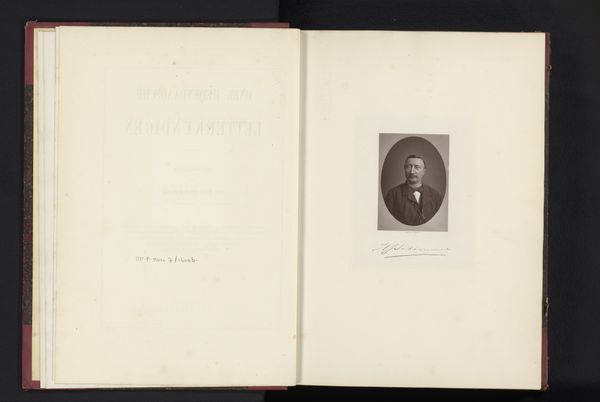
graphic-art, print
#
portrait
#
graphic-art
# print
#
realism
Dimensions: height 58 mm, width 38 mm
Copyright: Rijks Museum: Open Domain
Editor: So, here we have a print titled "Portret van M. Ambreville," dating back to before 1900. It seems to be an illustration within a theatre programme. I'm struck by the formality of the portrait against the backdrop of advertising. How do you interpret this work, especially its placement within a commercial context? Curator: This portrait, embedded in a theatrical advertisement, really highlights the intersections of art, commerce, and identity in the late 19th century. The “realism” style serves to legitimize not only Ambreville’s individual presence but also the theatrical productions being advertised. Consider who is being represented and for whom. Is it a performance of class, of masculinity? And how is the theater, a place for often subversive gender performance, itself being framed by advertising’s visual language and what this tells us about access. What does realism signify in relation to an elite bourgeois subject? Editor: That's fascinating, the idea of performance extended beyond the stage and into advertising. It feels like M. Ambreville’s identity is being leveraged for commercial gain. Is the portrayal a type of visual transaction between the celebrity/notable status and the theatre for the elite bourgeois? Curator: Exactly! And it asks critical questions. Who is able to enter into that visual contract, that circuit of representation? The staging of Ambreville signifies who has a public profile, and how this figure’s portrayal reinforces existing social hierarchies and their commodification through image and public life. Thinking of whose stories are represented can you consider who are often ignored by these images and performance venues at the time? Editor: Thinking about the working class, especially women, who may have been performers but wouldn't have had their portraits elevated like this. It makes me rethink what stories this image isn't telling. Curator: Precisely. It’s not merely about who is seen, but whose absence defines the visual landscape. Editor: I never thought of analyzing an old advert using social and political representation; thanks!
Comments
No comments
Be the first to comment and join the conversation on the ultimate creative platform.
